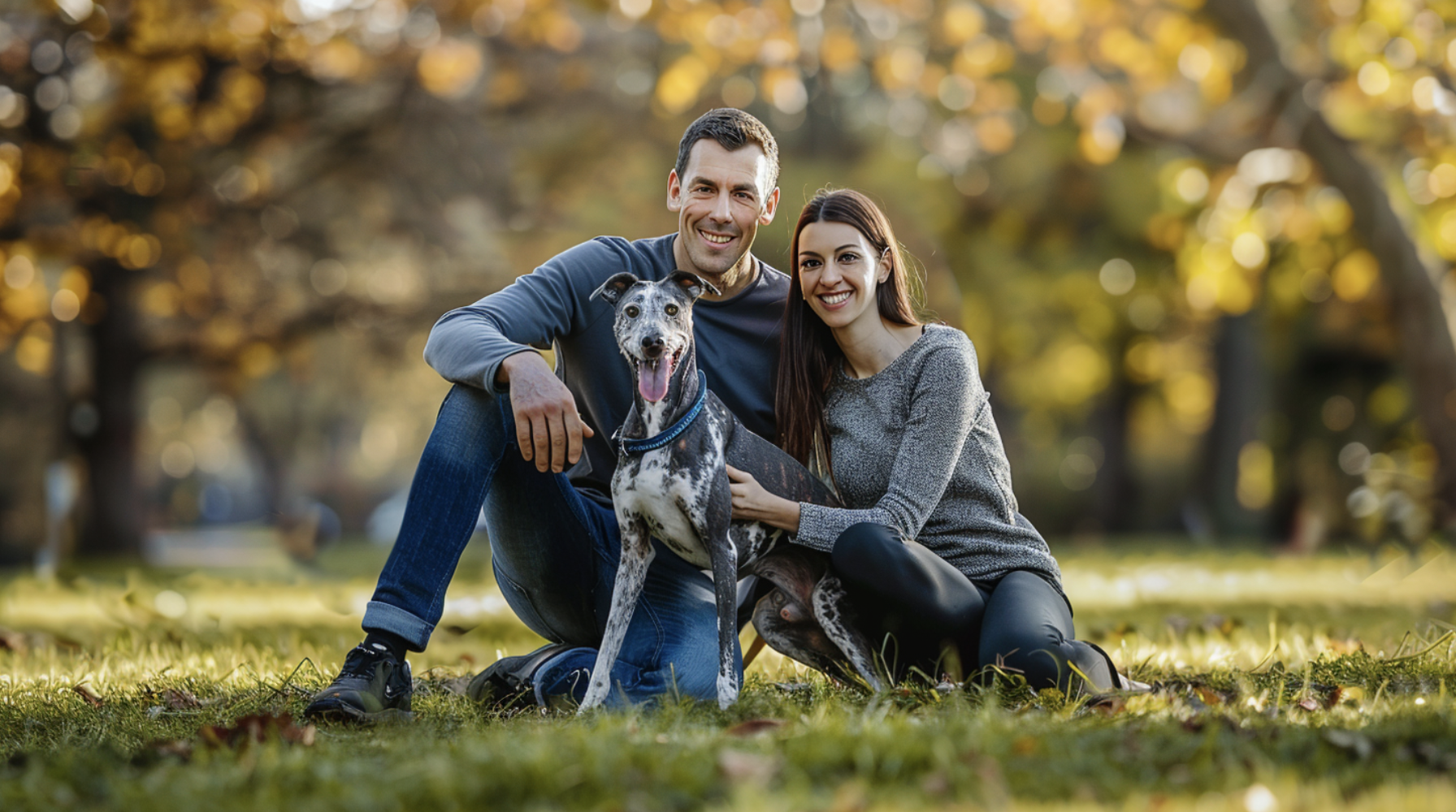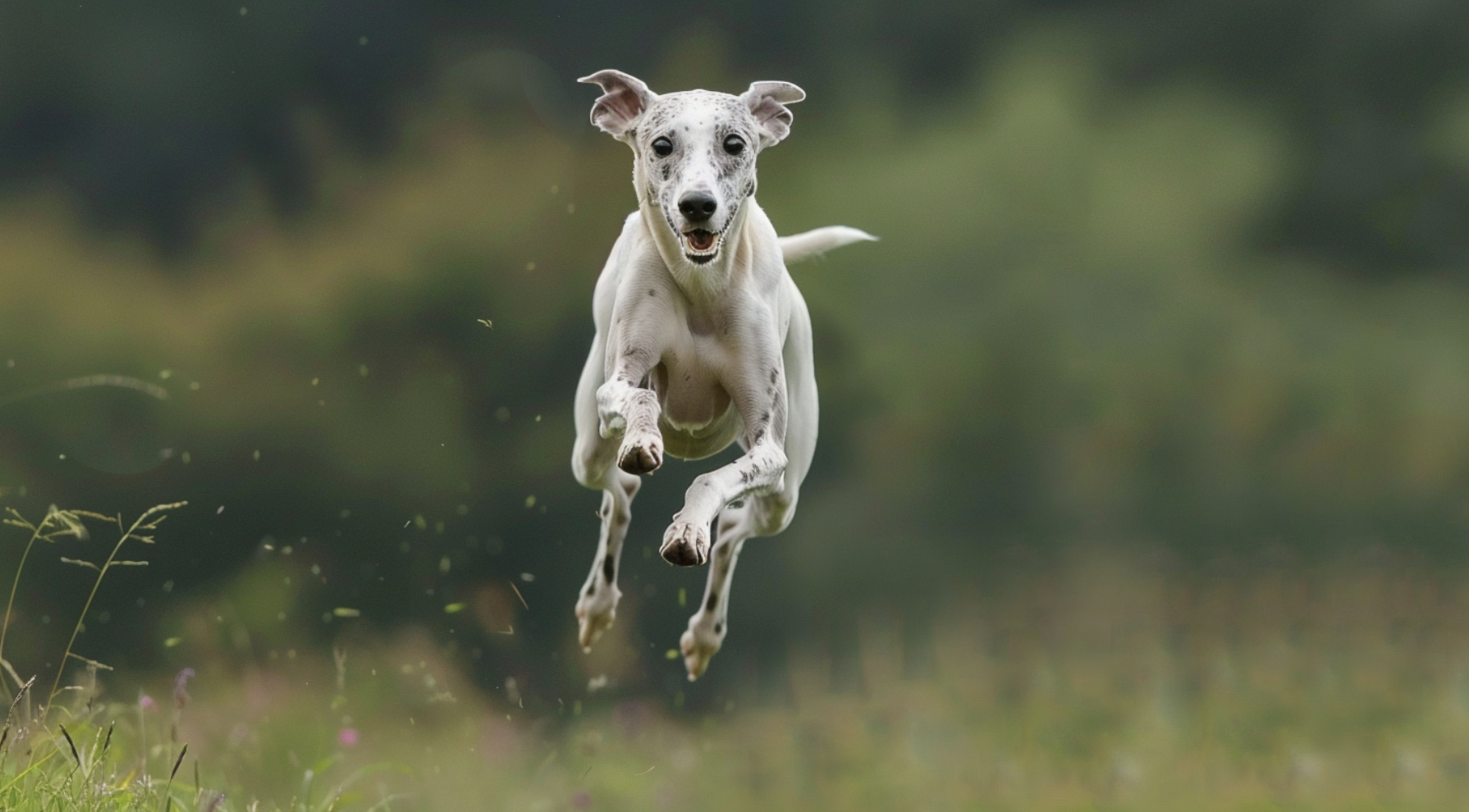Greyhounds are gentle, affectionate dogs that make wonderful companions, but adopting one comes with unique considerations.
While they have a reputation for being racing dogs, most Greyhounds today are retired racers looking for loving homes.
If you’re considering welcoming a Greyhound into your life, it’s essential to understand the joys and responsibilities of owning this special breed.
In this blog post, we’ll explore the numerous benefits of adopting a Greyhound and provide valuable tips to ensure a smooth transition for you and your new furry friend.
From their calm temperament to their low-maintenance grooming needs, you’ll discover why Greyhounds are an excellent choice for many households and what you can do to give them the loving home they deserve.
8 Benefits: Why You Should Own a Greyhound
1. Gentle and Calm Demeanor
One of the most appealing qualities of Greyhounds is their serene and gentle nature, making them wonderful companions, especially in quiet households.
Despite their reputation for speed on the racetrack, Greyhounds are calm and relaxed when not running.
They are known for being sweet-tempered and easygoing, preferring to lounge on a soft bed or couch for much of the day.
They are not typically high-energy dogs that demand constant attention or activity.
It is important to provide your Greyhound with regular, gentle interactions and a stable home life to help maintain its calm disposition.
Greyhounds thrive on routine and can become anxious if their environment is chaotic or unpredictable.
By offering your Greyhound a consistent schedule, plenty of love and affection, and a quiet place to rest, you’ll help them feel secure and relaxed in your home.
2. Affectionate and Loyal to Family

Greyhounds are known for forming strong bonds with their owners and being incredibly loyal companions.
Despite their independent nature, greyhounds thrive on the attention and affection of their owners.
They are sensitive dogs who can sense the emotions of their human companions and offer comfort and support in times of need.
Regular playtime, cuddles, and positive reinforcement through praise and treats will help strengthen your relationship and encourage your Greyhound’s affectionate and loyal nature.
3. Good with Children and Other Pets with Proper Introductions
While Greyhounds are generally gentle and friendly, their racing background means they may need some guidance when learning to interact with children and smaller pets.
However, with proper introductions and training, Greyhounds can become wonderful companions for families with kids and other animals.
Teaching children how to interact with their greyhounds respectfully is crucial, as well as ensuring they understand the importance of gentleness and giving the dog space when needed.
Supervising interactions between your Greyhound and children is always recommended to ensure a positive experience.
When introducing your Greyhound to other pets, take things slowly and use controlled introductions in a neutral space.
Keep your Greyhound on a leash and allow the animals to sniff each other and become accustomed to one another’s presence.
Reward positive interactions with treats and praise, and be patient as your Greyhound learns to coexist peacefully with other pets.
4. Generally Healthy with Fewer Genetic Diseases
Due to their history of selective breeding for racing performance, Greyhounds have maintained a generally robust and healthy constitution.
Compared to other breeds of the same size, Greyhounds are a relatively healthy breed with a lower predisposition to genetic health issues.
Your Greyhound can enjoy a long and healthy life with proper care and regular check-ups.
Greyhounds are prone to certain health issues, including:
- Gastric dilation and volvulus (GDV), or bloat
- Osteosarcoma: a type of bone cancer
- Aspergillosis: a fungal infection
- Pannus: an eye disease that causes blindness
- Dental disease
- Malignant hyperthermia: a life-threatening genetic disorder that results in a higher-than-normal body temperature
- Alabama rot: a skin and kidney disease
- Ventral comedo syndrome: a skin condition
- Idiopathic bald thigh syndrome: a skin condition
- Systemic lupus: an autoimmune skin condition
5. Long Lifespan Relative to Other Large Breeds
Another benefit of owning a greyhound is its potential for a longer lifespan compared to many other large dog breeds.
On average, greyhounds can live between 10 and 14 years, with some individuals reaching 15 years or more with excellent care.
This longevity can be attributed, in part, to the Greyhound’s genetic makeup and their history as athletic, physically fit dogs.
Their lean, muscular build and efficient metabolism contribute to their overall health and vitality.
Keeping your Greyhound at a healthy weight, providing them with mental stimulation, and addressing any health concerns promptly can all contribute to their longevity.
6. Athletic Ability: Enjoys Leisurely Walks and Moderate Exercise

Greyhounds are known for their impressive speed and athletic prowess on the racetrack, but they have relatively moderate exercise needs as pets.
While they enjoy daily walks and the occasional opportunity to run, they don’t require hours of intense physical activity to stay happy and healthy.
They also enjoy sprinting and stretching their legs in a safe, enclosed area like a fenced park or yard.
Aim to provide 30-60 minutes of moderate exercise daily to keep your Greyhound physically and mentally healthy.
This can include leisurely walks around the neighborhood, playtime with toys, and the occasional off-leash run in a safe, fenced area.
7. Good for Various Living Situations, Including Apartments
Despite their size, Greyhounds are well-suited to various living situations, including apartments and smaller homes.
Their calm, quiet nature and relatively low exercise needs make them an excellent choice for people who live in urban areas or have limited outdoor space.
Greyhounds are often content to spend much of their day lounging on a comfortable bed or couch, earning them the nickname “40-mile-per-hour couch potatoes.”
They don’t typically bark excessively or become destructive when left alone, making them ideal for apartment living.
Ensure they can access fresh water and a few engaging toys to stimulate them mentally.
Regular walks and potty breaks will help your Greyhound adapt to apartment living and maintain good indoor manners.
8. Known for Being Clean and Low-Maintenance
Greyhounds are often considered one of the cleanest and most low-maintenance dog breeds.
Bathing them too often can strip their coat of natural oils and lead to dry, irritated skin. Most Greyhounds only need a bath every few months or when they’ve gotten particularly dirty.
Greyhounds are also relatively light shedders, which means less time spent vacuuming and lint-rolling your clothes and furniture.
Their short, fine hair is easy to brush and maintain, requiring only occasional grooming to keep their coat looking sleek and shiny.
To keep your Greyhound clean and healthy, establish a regular grooming routine that includes brushing its teeth, cleaning its ears, and trimming its nails.
Tips for Prospective Greyhound Owners to Consider Before Adoption
1. Consider the Greyhound’s Past Life and Racing Background
When adopting a Greyhound, it’s essential to understand their unique needs and characteristics that stem from their past experiences as racing dogs.
Many Greyhounds available for adoption are retired racers, which means they may have spent much of their early life in a racing environment, with limited exposure to typical household sights, sounds, and routines.
Greyhounds recently retired from racing may be unfamiliar with common household items like stairs, mirrors, or sliding glass doors.
They may also be sensitive to loud noises or sudden movements, as they are accustomed to a more predictable and structured environment.
Learn about the common traits and behaviors of retired racers to help your greyhound adjust to its new home.
Be patient and understanding as your Greyhound learns to navigate its new surroundings and adapt to a different way of life.
Provide a quiet, comfortable space to retreat when it feels overwhelming, and gradually introduce it to new experiences and stimuli at a relaxed pace.
2. Engage with Rescue Organizations for Background Checks and Compatibility
When adopting a Greyhound, working closely with a reputable rescue organization can be invaluable in ensuring a successful adoption experience.
These organizations often have extensive knowledge of each dog’s background, health, and temperament and can help match you with a Greyhound that will fit your home and lifestyle well.
To make the most of your partnership with a Greyhound rescue organization, be open and honest about your living situation, dog experience, and expectations for your new pet.
Ask plenty of questions about any Greyhound you are interested in adopting, including their energy level, sociability with other dogs and people, and any specific care requirements they may have.
3. Understand the Financial and Time Commitment Required
Before adopting a Greyhound, it’s crucial to understand the financial and time commitments involved in providing them with a happy, healthy life.
While Greyhounds are generally a low-maintenance breed regarding grooming and exercise needs, they still require regular veterinary care, quality food, and plenty of love and attention from their owners.
Some of the costs associated with owning a Greyhound may include annual check-ups and vaccinations, dental care, flea and tick prevention, and any necessary medications or treatments for health issues that may arise.
You may also need to invest in high-quality dog food, comfortable bedding, toys, and other supplies to keep your Greyhound healthy and entertained.
In addition to the financial commitment, adopting a Greyhound also requires a significant time investment. They need daily exercise, mental stimulation, and companionship from their owners.
Conclusion
In conclusion, adopting a Greyhound can be a rewarding and life-changing experience for the right person or family.
These gentle, loyal, and low-maintenance dogs make wonderful companions and can thrive in various living situations.
Understanding their unique needs stemming from their racing background and working closely with reputable rescue organizations can ensure a smooth transition and a happy, healthy life for your new furry friend.
Remember, adopting a Greyhound is a long-term commitment that requires financial planning and dedicating time for exercise, training, and companionship.
If you’re ready to open your heart and home to one of these incredible dogs, take the next step and reach out to a Greyhound rescue organization near you to find your perfect match.
Your new best friend is waiting for you!






